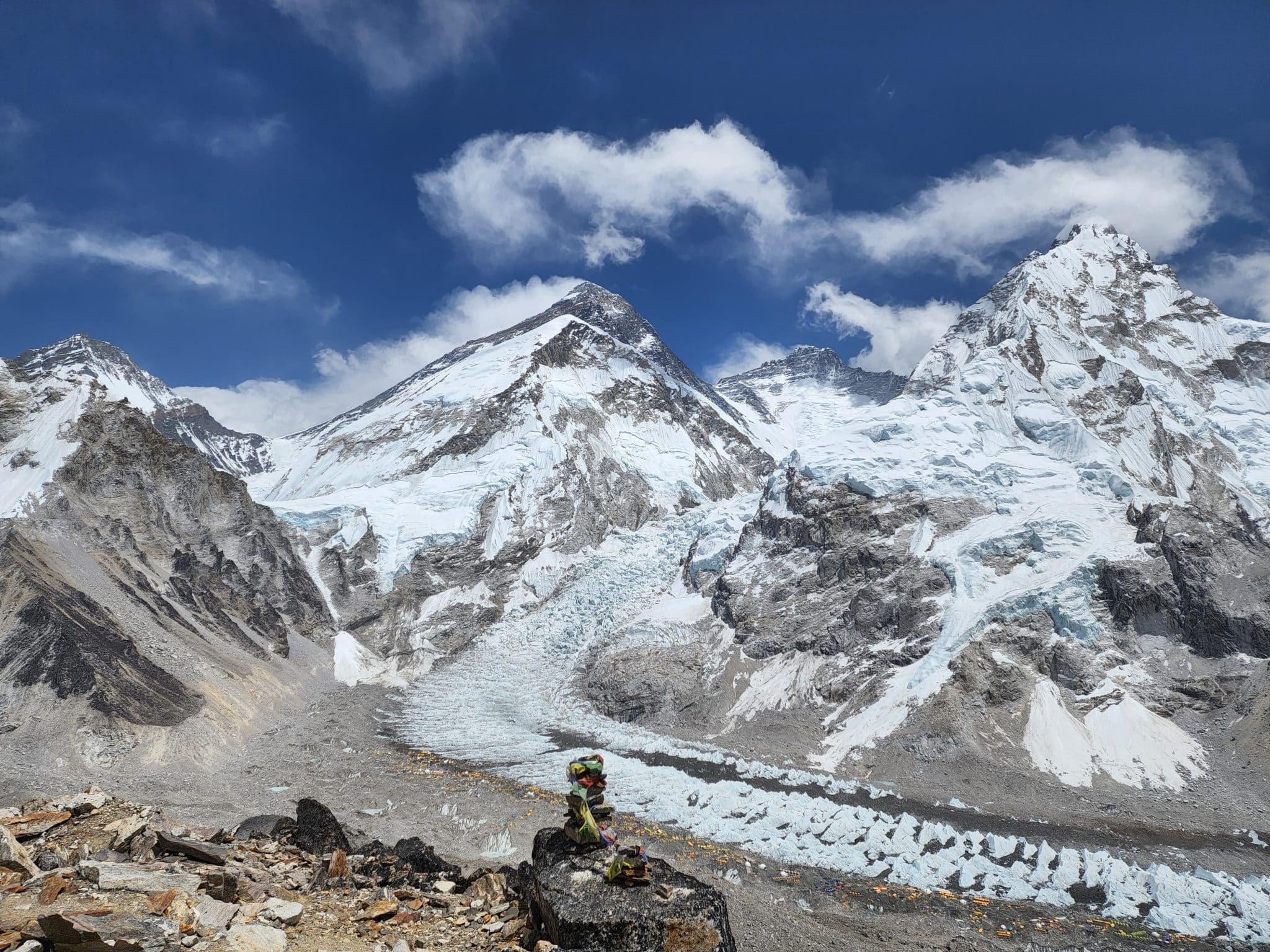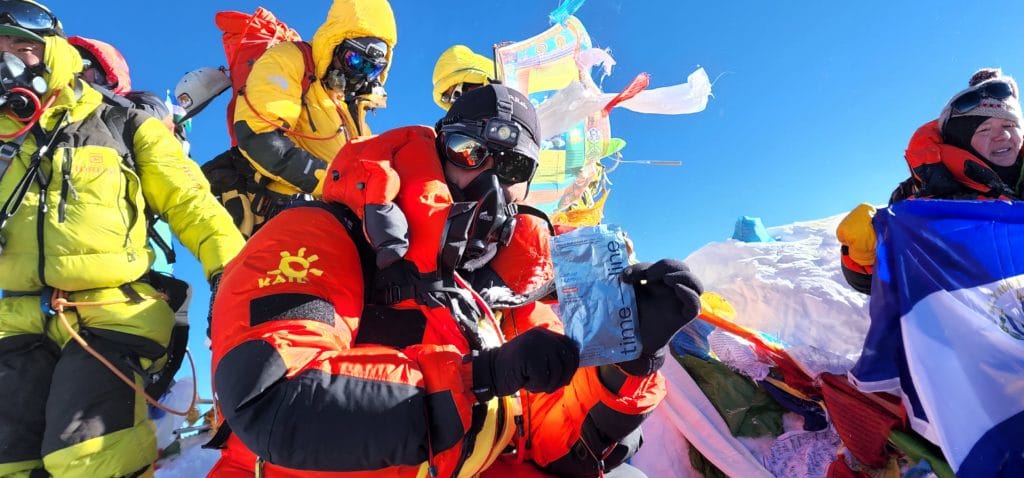
High in the peaks of the Himalayan mountains live a remarkable group of people: Sherpas. Known for their physical strength and endurance when climbing some of the world’s highest mountains, these individuals have developed a unique metabolic adaptation that allows them to perform incredible physical feats at incredibly high altitudes.
What makes Sherpa capable of thriving in the extreme environments that most people can’t tolerate? And what can humans living at low altitudes do to acquire these bionic capabilities?
That’s what mountaineer Jatin Chaudhary wanted to find out.
A man with a dream
Jatin Chaudhary is native to one of the flattest districts in India – Kutch, yet caught the mountaineering bug after riding motorcycles through the Himalayas. He dreamed of being amid the mountains and scaling their highest peaks, including the 8,848 feet of Mt. Everest.
But for a 43-year-old software developer living in the “white desert of Kutch,” a lot of training and hard work would need to happen to make this dream a reality. He decided to quit his job as a Senior Software Development Manager at Amazon to dedicate his time to making this dream a reality.
A trail of successful climbs
Chaudhary began his mountaineering career with some smaller peaks. He started with one of India’s most challenging treks, Parang La, at 5600 meters. Shortly after, he summited the 6,145 meters of Lobuche Peak in Nepal.
His confidence from these two accomplishments spurred him to attempt Ama Dablam. This peak is one of the most technical mountains to climb, often being reserved for after completing Everest. Chaudhary was undeterred. On November 9th, 2021, he became the 13th Indian and 1st Gujarati to summit to the top of this 6812-meter peak successfully.
Learning from the Sherpas
After his successful climbs, Chaudhary was ready to take on Everest. However, this time he wanted to climb not as an amateur but as a true mountaineer. He applied and got accepted into the esteemed Basic Ice Climbing course at Khumbu Climbing Center in Nepal and passed this competitive course with honors, an accolade only he and one Sherpa could claim.
With experience and training under his belt, Chaudrey’s next focus was to keep fit and injury-free until the expedition began. Studies show that after age 40, the success rate for summiting Everest declines, and even more alarming is that fatalities increased for this age group.
As a software engineer, he was data-oriented, so he began to look into what made the Sherpas so special. Clearly, something is unique about this group of people, and Chaudhary started his quest to find out what.
Mitochondrial adaptations
Chaudhary discovered through his research that Sherpa’s have genetic variations that allow for improved muscle energetics in the absence of oxygen. At the core of this genetic variation is a difference in mitochondrial function between the high-altitude Sherpa’s and Lowlanders.
The mitochondria are our body’s energy-producing factories, and they rely on oxygen to convert food fuel sources into energy. Sherpa’s mitochondria have evolved to create energy in low oxygen environments more efficiently than those of us who live at lower altitudes.
Urolithin A and mitochondrial health
The more Chaudhary dug into Sherpa’s mitochondria, the more convinced he became that he needed to focus on mitochondrial health. Unsurprisingly, his research led him to a compound called Urolithin A, sold under the brand Mitopure by Timeline. Urolithin A is a microbiome-derived postbiotic synthesized from certain foods that we eat, and it upregulates mitophagy — the process by which mitochondria repair themselves to improve performance.
Chaudhary began taking Mitopure and could not believe the results. When he climbed Ama Dablam, he took in five to eight breaths per step and visibly struggled. After taking Miopure, he was down to two breaths per step. He felt so good that he challenged his Sherpa to a sprint!
Chaudhary shares that “Mitopure was the X-factor I was looking for. In three months with all other variables constant, my VO2Max went up from 47 to 51, and my resting pulse monthly average went down from 47 to 45.”
Chaudhary meets Everest
The Everest expedition kicked off from Kathmandu on April 14th. Due to his extensive training and experience, Chaudhary was selected to be the team leader for eleven climbers. The group did a series of acclimatization climbs from base camp and started their summit on the morning of May 8th. On May 12th, his dream of summiting Mt Everest came true as he reached the peak.
Chaudhary describes the experience as being on a pilgrimage. It changes you. You need literal superhuman strength to combat the constant fatigue, nausea, lack of sleep, and hypoxia you experience as you reach heights many humans can’t survive at. You experience so many emotions you would never experience in your daily life. Having almost lost a team member to Acute Mountain Sickness, Chaudery now values whatever time he has on earth so much more.
What can be learnt from Chaudhary and the Sherpas
While most of us won’t spend anytime above 8,000 meters, mitochondrial health is essential for us to focus on. I’ve talked about the importance of mitochondria and keeping them strong. Like with the Sherpas, healthy efficient mitochondria can generate more cellular energy for us, which is important at any altitude.
Urolithin A’s ability to improve mitochondrial health through mitophagy has been extensively researched. Recent trials have shown its ability to increase muscular strength and performance in elderly and middle-aged adults, and its potential to improve athletic performance is currently being studied in elite runners.
Mitopure offers a highly pure form of Urolithin A that gives you six times the amount you could get from diet alone. Whether you are climbing the world’s tallest mountains or just want more energy to stroll up the neighborhood hills, taking care of your mitochondria means taking care of your health.
Visit www.timelinenutrition.com/shop and use code DAVE to get 10% off your first purchase of any Mitopure 2,4 or 12 month plan, including the new subscriptions. I have permanently added Mitopure to my daily stack and have been taking it for years.













